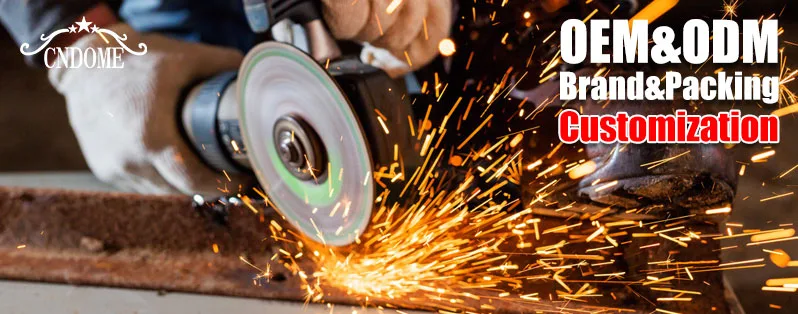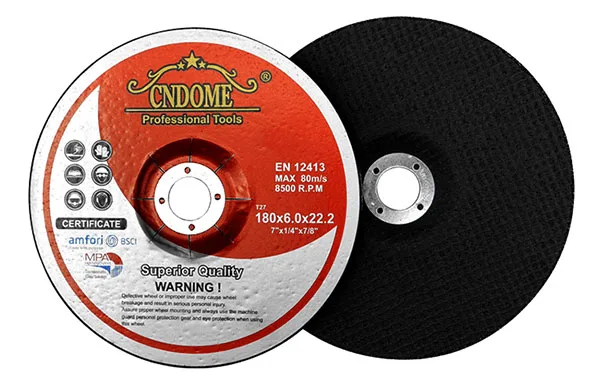In the world of metalworking, precision and efficiency are paramount, and the tools you choose can make all the difference. Two common tools that often find themselves in the hands of craftsmen are the grinding wheel and the abrasive disc. While they share the common goal of shaping and finishing materials, understanding their differences can unlock a world of possibilities in your workshop.
The Grinding Wheel: A Force of Precision
A grinding wheel is a robust and specialized tool designed for heavy-duty grinding applications. It consists of abrasive particles bonded together with various materials like vitrified clay, resin, rubber, or metal. The grains of the abrasive material on a grinding wheel are typically larger, making them ideal for aggressive material removal. These wheels are the go-to choice for tasks such as shaping metals, sharpening tools, and grinding down welds.
Key Features of a Grinding Wheel:
Durability: Built to withstand high-pressure applications and extended use.
Grit Size: Larger abrasive particles for efficient material removal.
Material Compatibility: Ideal for grinding metals and other hard materials.
Precision Grinding: Suited for tasks requiring precision and control.
The Abrasive Disc: Precision in a Compact Form
On the other hand, an abrasive disc, often known as a cutting or grinding disc, is a more versatile tool suitable for a variety of tasks. It comprises a thin, flat disc with abrasive particles embedded throughout. Abrasive discs are known for their flexibility and efficiency in various applications, including cutting, grinding, and polishing. They are particularly effective for tasks that require finesse and a smooth finish.
Key Features of an Abrasive Disc:
Versatility: Suited for cutting, grinding, and polishing tasks.
Size Options: Available in various diameters and thicknesses for different applications.
Material Compatibility: Effective on a range of materials, including metals and plastics.
Ease of Use: Lightweight and easy to control, making them suitable for intricate work.
Choosing the Right Tool for the Job:
Material and Application: Consider the material you’re working with and the specific task at hand. Grinding wheels excel in heavy-duty applications, while abrasive discs offer versatility.
Precision vs. Versatility: If precision is paramount, especially in tasks like tool sharpening, a grinding wheel is your best bet. If you need a tool that can handle a variety of tasks, an abrasive disc is more versatile.
Tool Compatibility: Ensure that your chosen abrasive aligns with the specifications of your grinder. Both grinding wheels and abrasive discs come in various sizes and configurations.
Conclusion: The Perfect Complement
In essence, the choice between a grinding wheel and an abrasive disc depends on the nature of your project. The grinding wheel, with its precision and durability, is like a sculptor’s chisel, shaping and refining with deliberate force. On the other hand, the abrasive disc is the artist’s brush, versatile and adaptable, allowing for intricate strokes and finishes. Together, they form a dynamic duo, providing the versatility and precision needed to master the art of metalworking. So, the next time you embark on a project, choose your tool wisely, and let the sparks fly in your workshop!



